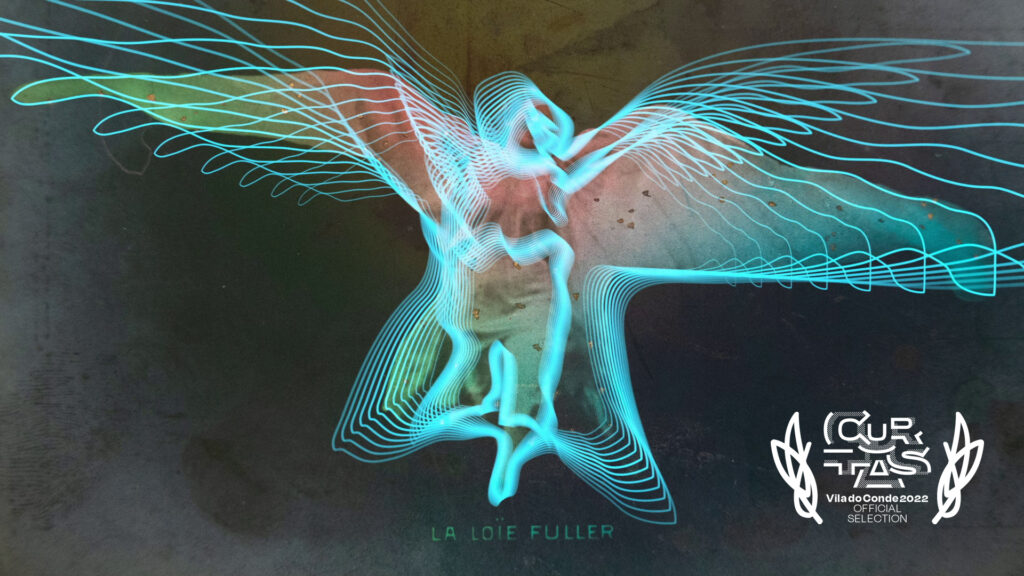LOÏE FULLER. THE ELECTRIC SPRITE – in Competition at Curtas Vila do Conde
The festival will take place from 9 to 17 July 2022 in Vila do Conde near Porto/ Portugal.
…………………………………………….
Tracking down an exceptional character – one who had been forgotten for decades – Betina Kuntzsch’s film reawakens the magic of Loïe Fuller as well as her shimmering audacity. Because her “Serpentine Dance” was not magic, even at the fin de siècle. The mesmerising choreographies were based on years of experimentation with phosphorus, crystals and textiles, as well as the optical and technical stage innovations with which she created the perfect illusion: anticipating the immersive space and the dematerialised, virtual body at the end of the 19th century.
The date is 5th December 1892, and Loïe Fuller is making her debut at the Folies Bergères. Points of light, coloured and luminous threads ripple through the space. One dancer, multiple figures. Energy and aggregate states transform into intangible lines, into droplets and waves. Light sources become water, become crystal as if by magic. Her body sets hundreds of metres of black gauze into vibrant motion – a shadowy silhouette among iridescent contours and solitary spots of light. Bright spots, pouring colour. To the audience, she seems “far beyond the falling tears”. Le Tout-Paris celebrates La Loïe! The American became the epitome of the Belle Époque, the pioneer of modern dance and the source of inspiration for abstract art , immortalised in drawings and sculptures or the famous lithographs by Toulouse-Lautrec. Stéphane Mallarmé celebrated Fuller’s “artistic intoxication” and “technical achievements”. The Lumière brothers and Auguste Rodin were among her admirers and circle of friends, as was Nobel Prize winner Marie Curie.
Betina Kuntzsch explores the boundaries of materiality and immateriality in her video-drawings as well as in her animated documentaries. Finding illuminating layers of space and time in the material resistance of video fields, film dirt or artefacts, faded photos or decomposed celluloid, she is able to lend a fascinating material quality to the immaterial medium.
Kuntzsch spent around three years researching for her 16-minute animated film. Discovered previously unpublished material in film and image archives, grew crystals for her own recordings, researched the story of an American woman in Paris on location, in libraries and on the internet. She reconstructed Loïe Fuller’s dance from her sketches and notes and, by translating them into the lineatures of the video-drawing, echoed the (apparent) lightness with which Fuller’s “sculptures of light” were created live on stage.
In an impressive collage of historical photographs and film strips, quotes from contemporary witnesses and personal statements by the dancer and choreographer, who was born in 1862, Kuntzsch has documented graphically the life, research and work of this extraordinary and unusually emancipated woman.
Marie Louise Fuller, who came from a village in the US state of Illinois, was an artist and inventor, producer, filmmaker and entrepreneur all in one, and an avowed homosexual. The film traces the elaborate development of the stage robes as a kind of declaration of love by Fuller to her decades-long partner in life and work, Gabrielle Bloch.
A long overdue tribute to an artist, explorer and adventurer whose ground-breaking innovations revolutionised costume and stage design, liberating ballet from the tutu as well as the female body from its corset.
Michaela Nolte, Berlin 2022
